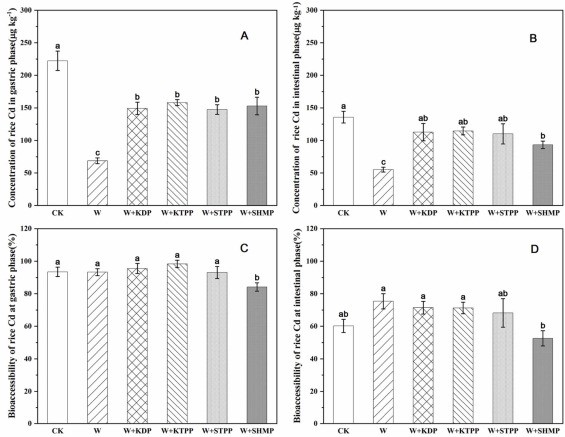

With the rapid development of economy, heavy metal pollution of farmland soil and crops caused by various natural and human factors is becoming more and more serious. In situ passivation remediation technology is a highly respected treatment method at present. It can reduce the absorption of heavy metals by crops by applying soil passivator to stabilize heavy metals in situ. Rice is a crop that can easily accumulate cadmium (Cd). Long term consumption of contaminated rice can cause potential harm to human health. In order to accurately evaluate the absorption, utilization and hazard risk of heavy metals, in vitro bioaccessibility can be used to indicate the maximum human bioavailability of oral route of heavy metals. In-situ soil cadmium (Cd) immobilization helps to reduce Cd accumulation in rice grain, while its effects on bioaccessibility of Cd in rice during digestion and the associated health risk from rice consumption remain unclear.
In-situ soil Cd immobilization and bioaccessibility-corrected health risk assessment (HRA) were combined to minimize both the risk and uncertainty of Cd exposure from rice consumption. Wollastonite with or without four different phosphates (P) were applied to immobilize soil Cd at paddy fields, and their influences on Cd, essential elements, and amino acids in rice grain were analyzed. Moreover, a bioaccessibility-corrected HRA was conducted to accurately reflect the Cd exposure risk from ingesting these rices. The results showed the co-application of wollastonite and four different P reduced Cd concentrations in rice grain equally, while their impacts on bioaccessibility of Cd in rice during simulated human digestion were inconsistent (53%–71%). The HRA based on bioaccessibility of Cd in rice revealed that Cd exposure risk from rice consumption was lowest with the application of wollastonite, followed by the co-application of wollastonite and sodium hexametaphosphate. This work highlights the value of bioaccessibility-corrected HRA for screening the optimal Cd immobilization strategy to achieve safer rice consumption.
The research results entitle by “Joint approaches to reduce cadmium exposure risk from rice consumption” was published in “Journal of Hazardous Materials”(IF2020=10.588). Dr. Mao Peng is the first author, and Professor Li Zhian and Dr. Zhuang Ping are the corresponding authors of this paper.

Figure. Concentration of rice Cd in gastric phase and intestinal phase and their bioaccessibility based on a physiologically based extraction test (PBET).
Note: CK, non-amended treatment; W, wollastonite; W+KDP, wollastonite with potassium dihydrogen phosphate; W+KTPP, wollastonite with potassium triphosphate;
W+STPP, wollastonite with sodium tripolyphosphate; W+SHMP, wollastonite with sodium hexametaphosphate.

